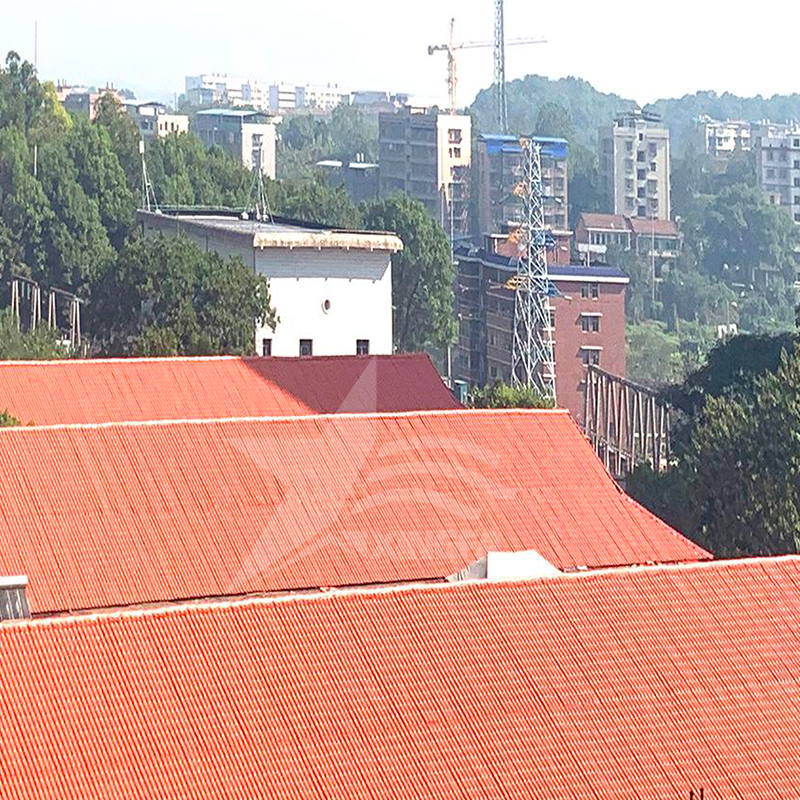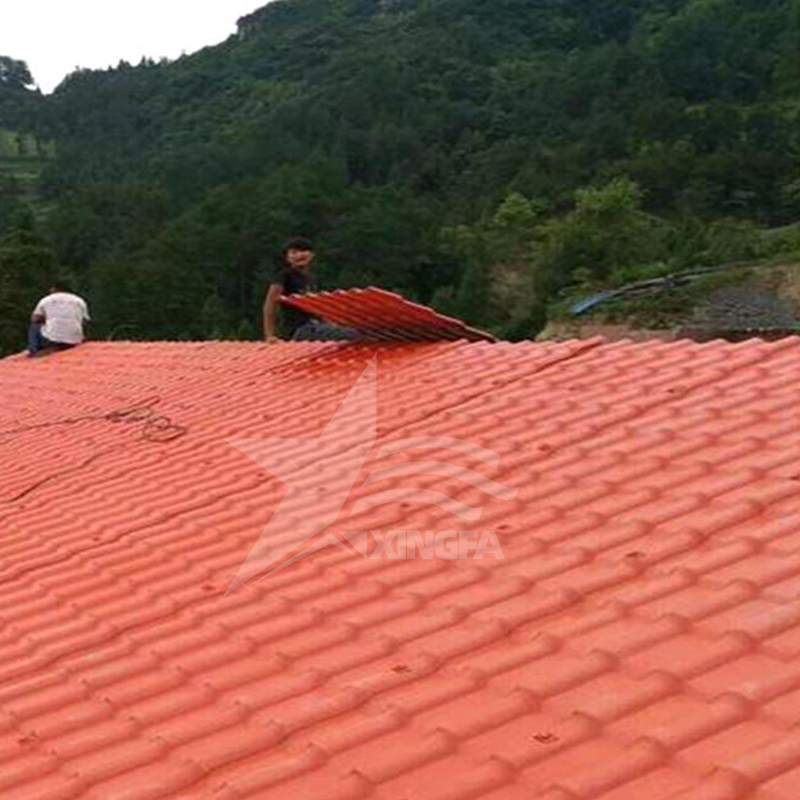Synthetic resin tile ridge tiles are an indispensable part of roof construction. They are located at the intersection of the two slopes of the roof and serve as an important protector of the ridge of the house. With the improvement of environmental awareness and the development of science and technology, new roofing materials such as resin tiles and ridge tiles have become people’s first choice. In the design and production of resin tile ridge tiles, considerations such as specifications and shapes are crucial.

First of all, the specifications of resin tile ridge tiles usually have two common sizes, namely 1050x400x148mm and 880x400x148mm. Among them, the 1050mm width specification is more common, while other widths and thicknesses generally require customized production to meet different building needs. Typically, these tiles are 2.5mm thick and offer good durability and waterproof properties.

Secondly, resin tile ridge tiles are divided into two main types in shape: round ridge tiles and square ridge tiles. Round ridge tiles are the more common type. Their design is simple and elegant, and they are suitable for various architectural styles. The square ridge tile is a newly launched style, which is characterized by an antique pattern with vertical door edges embedded in the middle, giving it an antique aesthetic effect and more in line with the needs of some retro-style buildings.
No matter what shape the synthetic resin tile is, its application on the roof is extremely important. Ridge tiles can not only fix and connect the roof ridge, but also decorate the roof, creating a grand and simple effect. In the selection and application of ridge tiles, not only should their appearance be considered, but also their quality and durability should be paid attention to to ensure the long-term protection and beauty of the roof of the house.

In summary, synthetic resin tile ridge tiles, as an important part of new roofing materials, have the characteristics of various specifications and rich shapes. Through careful selection and application, it can provide buildings with superior waterproofing, thermal insulation, decoration and other functions, becoming an indispensable part of modern architecture.
